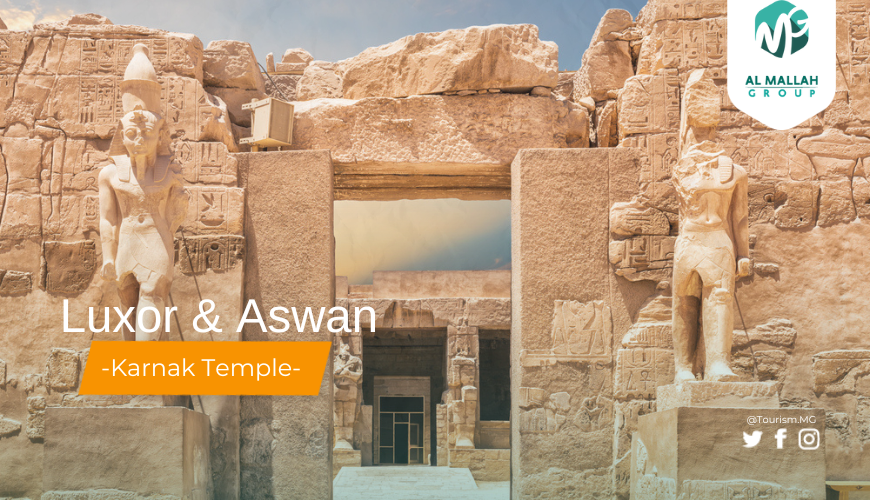The Karnak Temple is situated on the east bank of the Nile River in the timeless city of Luxor, serving as a testament to the greatness of ancient Egypt. It is not just a single temple; rather, it is an extensive complex of temples, halls, grand gates, and other structures – a city within a city, dedicated to multiple deities.
The architecture of Karnak is awe-inspiring, with towering columns, intricately carved hieroglyphs, and colossal statues that narrate the stories of the great pharaohs who contributed to its construction over the centuries. Built and expanded over 1300 years, the Karnak Temple was the most significant religious site in ancient Egypt, devoted to the worship of Amun, Mut, and Khonsu, the principal gods in Thebes.
The temple is connected to the Luxor Temple by the Great Avenue, lined with hundreds of sphinx statues. This 2.7-kilometer-long avenue is a marvel in itself. To fully appreciate the grandeur of Karnak, attending the sound and light show in the evening as the sun sets is recommended. The temple is illuminated, and a captivating narrative unfolds, recounting the history and myths of ancient Thebes.
For many, a visit to the Karnak Temple is a profound spiritual experience, where the earthly and divine realms meet. Exploring its sacred precincts allows you to feel the energy of a civilization dedicated to venerating its gods. Karnak is not merely a historical site; it is a gateway to the spirit of ancient Egypt. Its colossal scale, the dedication of craftsmen, and the countless rulers involved in its construction make it a prominent symbol of Egypt's ever-renewing heritage.


